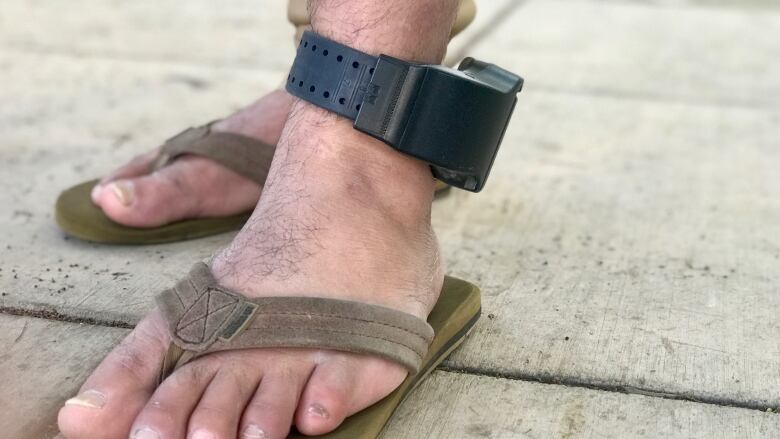No inmates sent home during pandemic reoffended, P.E.I. jails report
Jails now isolating inmates and testing them for COVID-19

P.E.I. correctional officials say noinmates sent home from jail wearing electronic ankle bracelets during the COVID-19 pandemic have reoffended.
When the pandemic hit, corrections staff "had toreact very quickly to ensure the safety of our clients," said Shannon Ellis,acting director of community and correctional services.
There were 138 inmates in custody at the time either serving sentences orunder remand awaiting a trial.
Corrections staff decided they needed to reduce the number of inmates in custody to reduce the chance of COVID-19 spreading.
From mid-March to mid-April, 53 inmates were released from the Provincial Correctional Centre in Charlottetown and PrinceCorrectional Centre in Summerside on a temporary absence26 were serving weekend sentences, the other 27 were serving their whole sentence in custody.
Inmates had to be considered low risk to be eligible. Priority was given to older inmates and those with existing medical conditions, who were considered at a higher risk of getting COVID-19, in addition to those serving time for non-violent crimes ornearing the end of their sentence.
During that time, they were checkedon daily.

Of the 53 released, 43 were outfitted with electronic monitoring bracelets and placed under house arrest. The bracelets have GPS and monitor the wearer's movements in real time, to ensure inmates stay at home.
None of the 53 sent home reoffended or breached the conditions of their release, said Ellis. "It worked well."
Some have now finished their sentences, while others continue to be under house arrest.
During the early phases of the pandemic, the courts were adjourning a lot of cases.

But now, those cases are being heard and more prisoners are being sentenced to custody, so P.E.I.'s two jails have adopted a new approach.
When a prisoner is admitted, they are tested and put in an isolation unitfor seven days, then are retested.
"If they receive twonegative tests then they would enter back into the regular population," said Ellis.
There are about 85 inmates in custody now, he said, and he expects that number to increase as the courts sentence more offenders.
Ellis said staff are keeping an eye on numbers in the jail and if it appears they're getting too crowded, they may look again at sending more prisoners home with ankle bracelets.
It is cheaper to monitorprisoners at homethan house them in jail, but Ellis said, "wedon't look at that. We look at more of the safety and risk."
"We're always looking at different ways of doing corrections and if there are some of these little nuggets that we can take out of a bad sort of time then we'd certainly like to explore that," he said.
More from CBC P.E.I.
With files from Angela Walker












_(720p).jpg)


 OFFICIAL HD MUSIC VIDEO.jpg)
.jpg)



























































































